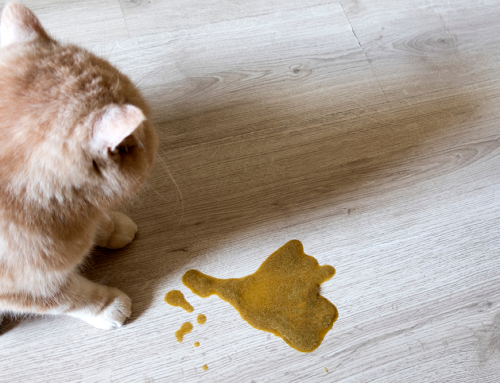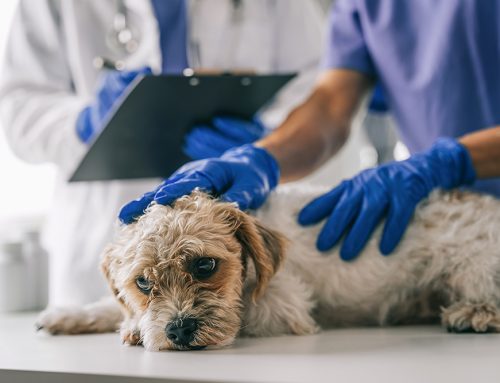Summertime in Lakewood Ranch, Florida, means sunshine, outdoor fun, and high temperatures. While it’s a season many of us look forward to, it’s also a time when pets are particularly vulnerable to heat-related illnesses. At Wellness Animal Hospital, we believe prevention, preparation, and education are the keys to keeping your pet safe, comfortable, and healthy all summer long.
Why Pets Struggle More Than Humans in the Heat
Unlike humans, pets have limited ways to cool themselves. They don’t sweat through their skin; instead, dogs pant and cats lick their fur to regulate body temperature. Their fur coats, while protective, can trap heat and humidity—especially in Florida’s warm, muggy climate. Pets also rely entirely on their owners to help them stay cool. They can’t move themselves to shade, refill their water bowl, or tell you when they’ve had too much sun.
Key Ways Pets Overheat:
- Panting is their main cooling method, and it becomes less effective in humid weather
- Fur coats trap heat and restrict natural airflow
- They can’t easily escape hot environments without human help
- Some pets, especially eager dogs, won’t stop playing even when they’re overheating
Be Your Pet’s Advocate
It’s up to you to recognize when conditions are too extreme. Never leave pets in parked cars, not even for a minute. Never tie your pet out without supervision—shade moves, leashes tangle, and accidents happen. Always ensure they have access to fresh water and shaded areas all day long. And if your pet has a thick double coat, be sure it’s properly groomed to remove mats and excess insulation.
Pets Most at Risk from Heat
Some pets are more susceptible to heatstroke and related issues. Be especially cautious with:
- Flat-faced breeds like Pugs, Bulldogs, and Persian cats (Brachycephalic Research – Purina Pro Club)
- Overweight pets, who retain more heat
- Senior pets or those with heart or respiratory conditions
- Dark-coated pets, which absorb more solar heat
- Thick-coated breeds like Huskies or Newfoundlands
Easing Into Summer Safely
As temperatures rise, gradually increase your pet’s activity level. If they’ve been less active during cooler months, avoid jumping right into long walks or vigorous play. Stick to early morning or evening outings when it’s cooler, and avoid hot pavement that can burn paws (Walking On Sunshine – AAHA).
Tips for Smooth Seasonal Transitions:
- Gradually increase outdoor activity
- Schedule a grooming appointment to remove winter undercoat
- Check paw pads for signs of damage
Recognizing and Responding to Heatstroke
Early Signs of Heat Stress:
- Heavy panting
- Drooling
- Restlessness or seeking shade
- Bright red gums
Severe Signs of Heatstroke:
- Vomiting or diarrhea
- Collapse or disorientation
- Seizures
- Pale or gray gums
If your pet shows any of these signs, act fast:
- Move them to shade or a cool area
- Offer small amounts of cool (not cold) water
- Apply damp towels to belly, armpits, and paws
- Use a fan or AC
- Seek immediate veterinary care (Too Hot to Handle – AAHA)
What Happens After a Heatstroke?
Even if your pet appears better after cooling down, heatstroke can cause lingering internal damage. Within 24–72 hours, complications may arise, such as:
- Kidney failure
- Liver dysfunction and clotting issues
- Intestinal injury and sepsis
- Brain swelling and seizures
- Disseminated Intravascular Coagulation (DIC)
This is why immediate and follow-up veterinary care is so crucial.
Lesser-Known Summer Hazards
Sunburn Risks
Pets with light-colored coats, exposed skin, or sparse fur can burn easily. Noses, ears, bellies, and thin-furred areas are most vulnerable.
- UV protective shirts or suits can help
- Never use human sunscreen unless your vet approves it (Pets and Sunscreen Myths – ASPCA, Do Dogs Need Sunscreen? – NBC News)
Burned Paw Pads
Hot pavement and sand can cause painful burns. Test with your hand: if it’s too hot for you, it’s too hot for them. Booties can help protect paws and still allow sweating.
Eye Damage from UV
UV exposure can worsen conditions like pannus in certain breeds, especially at elevation. Goggles or “doggles” are a great option.
Creative Ways to Keep Your Pet Cool
Water Play:
- Kiddie pools in the shade
- Misting fans or sprinklers
- Frozen toys and treats (Water Safety for Pets – AAHA)
Cooling Snacks & Activities:
- Frozen Kongs filled with broth or yogurt
- Ice cubes made from pet-safe ingredients
- Puzzle toys for indoor enrichment (Keeping Cool – AAHA)
Cooling Gear:
- Bandanas, beds, and vests designed to retain coolness
- Ice-filled trays or mats to lay on
Playing Smart: Outdoor Exercise Tips
- Walk early or late to avoid peak heat (10am–4pm is most dangerous)
- Bring extra water and take shade breaks
- Monitor energy levels—don’t let your dog overdo it
- Use beach, hike, and lake days wisely—overexcited pets can quickly overheat
Keep the Indoors Comfortable Too
When the heat index soars, your indoor environment matters:
- Run AC or fans to maintain comfort
- Allow access to tile or hardwood for cool rest spots
- Create shaded, ventilated sleeping areas
- Keep pets stimulated with games like treat hide-and-seek, puzzle feeders, or scent training
Safety for Outdoor Cats
Even independent cats need help staying safe in summer:
- Ensure clean, cool water is always available
- Provide multiple shaded spots to rest
- Keep them inside during heat advisories (Cool Cats – AAHA)
More Summer Hazards to Watch
BBQ Dangers:
- No bones, fatty scraps, onions, or grapes
- Keep alcohol and desserts out of reach
Fireworks & Thunderstorms:
- Trigger anxiety and flight responses
- Keep pets indoors and use calming tools as needed
Bugs, Bites & Stings:
- Fleas, ticks, mosquitoes, and bees are common threats
- Prevent pets from trying to chase or eat buzzing insects
Snakes on Trails or in Yards:
- Know which venomous snakes are native to Florida
- Avoid overgrown grassy areas and keep pets on-leash during hikes (Snake Safety by Region – CroFab)
For a broader list of warm-weather concerns, check out 6 Summertime Dangers for Pets – AAHA.
Heat Safety Reminders
- Never leave pets in a parked car—temps rise to lethal levels in minutes
- Check both temperature and humidity—heat index matters
- Pets don’t always show signs of distress until it’s too late
- Always carry water and plan for shade
- Slowly acclimate pets to hotter conditions if they’ve been mostly indoors
Let Us Help Keep Your Pet Safe This Summer
At Wellness Animal Hospital, we’re here to support you and your pets through every season. If your pet is part of a high-risk group, or if you simply want to make sure they’re ready for summer, we encourage you to schedule a summer wellness exam.
Our team can provide personalized advice, grooming support, hydration strategies, and health checks that could make a life-saving difference.
Contact us today or request an appointment online to get started.








Leave A Comment